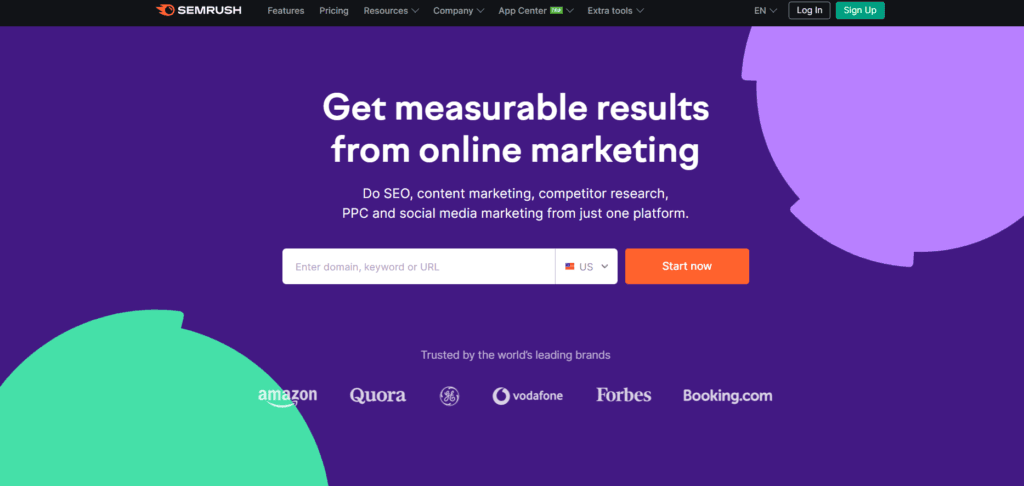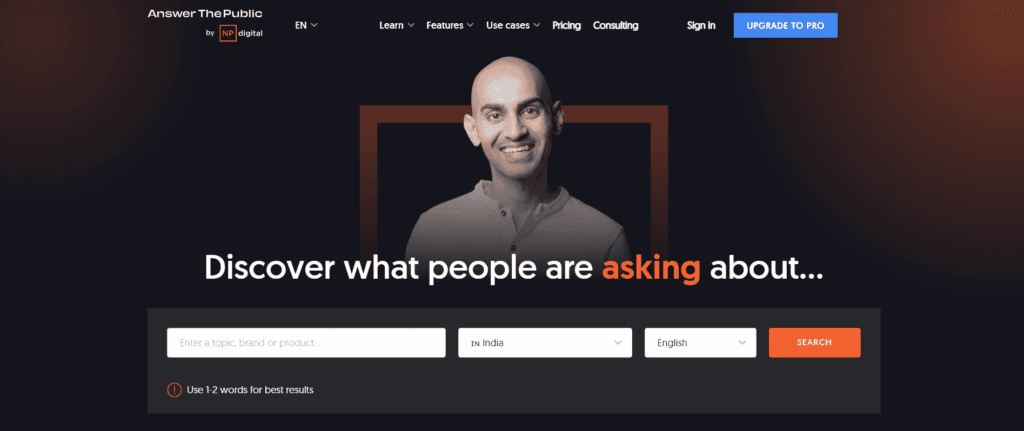In today’s rapidly evolving digital landscape, brands are continually seeking innovative ways to enhance their online visibility. Traditional SEO methods, which relied heavily on isolated keywords, are now making way for more holistic strategies.
Enter “Content Clusters” – a novel approach that’s gaining traction among marketers and SEO professionals alike.
By focusing on comprehensive topic clusters rather than isolated keyword strategies, businesses can create a robust digital ecosystem that not only caters to search engine algorithms but, more importantly, provides immense value to readers.
Understanding Content Clusters
Content clusters revolve around creating a series of interlinked articles or content pieces that address various facets of a broader topic. Imagine a solar system. The sun, the central element, represents the pillar content, while the planets orbiting around it represent cluster contents.
But why the shift to this strategy?
Because search engines have evolved. They now prioritize topic authority, rewarding websites that offer holistic and interconnected information on specific subjects.
Evolution from keyword-centric content to topic-centric clusters
Previously, the go-to SEO method involved generating isolated articles based on specific keyword research. This scatter-gun approach often led to fragmented user experiences.
With advancements in search algorithms, search engines like Google now favor topic depth and breadth, nudging marketers towards a more holistic content strategy. This evolution from keyword isolation to integrated topic clusters signifies a broader move towards user-centric SEO.
How content clusters enhance topic authority and relevance
Creating content clusters does more than just satisfy search algorithms. They provide readers with a comprehensive resource hub on a specific topic, establishing the brand as an authority. When a website successfully interlinks its content around a central theme, search engines recognize this interconnectivity and the depth of information, positioning the site favorably in search rankings.

The Anatomy of a Content Cluster
At the heart of a content cluster lies the pillar content—a robust, detailed piece that provides an exhaustive overview of the central topic. Picture it as the foundation of a building, supporting the subsequent floors (cluster contents). This cornerstone piece isn’t necessarily keyword-heavy, but it’s broad enough to encompass various subtopics that can be explored in detail through cluster content.
Cluster content: Detailed posts addressing subtopics or related questions
Branching out from the pillar are the cluster contents—individual, detailed articles delving into specific subtopics or related questions of the main topic. These pieces allow brands to zoom into niche areas of interest, catering to more specific user queries. The beauty? While each cluster content stands alone in its depth, it is intrinsically tied to the central theme, fortifying the topic’s comprehensiveness.
Hyperlinking and its role in connecting pillar and cluster contents
The magic of content clusters lies in hyperlinking. By internally linking cluster content back to the pillar (and vice versa), you create a web of interconnected information. This not only streamlines user navigation but also signals search engines about the depth and structure of the topic, strengthening the SEO weightage of the entire cluster.
Benefits of Implementing Content Clusters
Content clusters intuitively streamline site architecture. By grouping related content, users find it easier to navigate and access information, enhancing user experience (UX). In an era where UX is paramount, especially for decision-makers and executives with limited time, facilitating ease of navigation can drastically reduce bounce rates.
Enhanced topical authority in the eyes of search engines
By addressing a topic holistically, content clusters build topical authority. Search engines recognize this integrated approach and, seeing the interlinked structure, are more likely to deem your site as an authoritative source on the subject. In the competitive world of SEO, gaining an edge in topic authority can be a game-changer.
Potential to increase organic traffic and reduce bounce rates
Content clusters cater to both broad and specific user queries. While the pillar content draws in those seeking an overview, the detailed cluster pieces cater to niche, specific searches. This dual approach can significantly boost organic traffic. Moreover, by offering comprehensive insights within a connected framework, users are less likely to exit, leading to reduced bounce rates.
Step-by-Step Guide to Creating Content Clusters
Step 1 – Identify broad topics that your audience cares about
Begin by understanding your audience’s primary concerns and interests. Tools like Google Analytics or direct audience surveys can reveal the topics they gravitate towards.
Step 2 – Conduct keyword research for pillar content and potential cluster topics
Once you have your broad topic, dive into keyword research. Tools like Ahrefs or SEMrush can identify high-volume keywords for pillar content and related subtopics for cluster pieces. Remember, while the pillar focuses on a broader spectrum, the clusters zoom into specifics, so tailor your keyword strategy accordingly.
Step 3 – Draft pillar content that offers a comprehensive overview
Your pillar content should be the definitive guide to the chosen topic. It needs to be well-researched, detailed, and offer valuable insights without diving too deep into subtopics—that’s what cluster content is for. For decision-makers, this piece should serve as a quick yet comprehensive resource.
Step 4 – Create individual cluster contents targeting related keywords or questions
For each identified subtopic or related question, craft detailed cluster articles. Each piece should stand alone in its depth and value, but always maintain a clear connection to the pillar content. This interconnectedness enhances navigability and SEO relevance.
Step 5 – Establish internal linking between the pillar and cluster contents
The strength of content clusters lies in strategic internal linking. Ensure each cluster piece links back to the pillar and, where relevant, to other cluster contents. This creates a web of interrelated articles, enhancing user navigation and boosting SEO signals.
Tools and Technologies for Cluster Research

Modern SEO tools are invaluable for cluster creation. Platforms like Ahrefs or SEMrush offer in-depth keyword research capabilities, revealing potential topics and subtopics. For anyone serious about content strategy, investing in such tools can be a game-changer.
Utilizing audience feedback and tools like AnswerThePublic

Audience feedback is gold. Direct surveys, comments, or platforms like AnswerThePublic can unveil what your audience is genuinely curious about. This feedback can guide the creation of highly relevant and engaging cluster content.
Platforms for content mapping and visualization.
Organizing your content clusters visually can be a boon, especially when dealing with complex topics. Platforms that offer content mapping or visualization can help in planning and tracking the interconnections between pillar and cluster content, ensuring no overlaps or gaps.

Best Practices for Cluster Content Creation
While clusters dive into specifics, it’s essential not to compromise on depth. Each article should offer unique insights and value, positioning your brand as a trusted resource.
Avoid redundancy between pillar and cluster content
Consistency is essential, but redundancy is not. Ensure that your cluster articles provide fresh perspectives or delve deeper into aspects not exhaustively covered in the pillar content.
Regularly update pillar content as subtopics evolve or expand
The digital realm evolves rapidly. As new information or trends emerge, ensure your pillar content remains current. This not only boosts credibility but also signals to search engines the continued relevance of your content.

How to Promote and Share Clustered Content
When you’ve put effort into creating a cohesive content cluster, it’s vital to ensure it reaches the maximum potential audience. How you promote and distribute this content can directly impact its effectiveness.
Social media strategies for diverse content
While your pillar content can serve as a comprehensive guide, cluster articles dive into specifics, making them perfect bite-sized pieces for social media. Create engaging snippets, infographics, or short videos for each subtopic, and link back to both the specific cluster article and the main pillar content. This drives traffic while highlighting the depth of content you offer.
Email marketing: Segmenting based on user interest in specific clusters
For your subscribers, tailor newsletters based on their engagement history. If a user showed interest in a particular cluster, chances are they’d appreciate more in-depth articles on related subtopics. Segmenting your email list allows for personalized content delivery, increasing engagement and conversions.
Leveraging pillar content for guest post opportunities
Your comprehensive pillar content showcases your brand’s expertise on a subject. Offer to write guest posts on relevant platforms, using your pillar content as a backbone. This not only drives backlinks but also introduces your clustered content to a broader audience.
Evaluating the Performance of Your Content Clusters
To truly understand the impact of your content cluster strategy, regular evaluation is essential.
While traffic metrics provide insight into visibility, delve deeper. Analyze how users interact with your content—how long they stay, which internal links they click, and if they convert (be it a sign-up, download, or purchase).
Using Google Analytics to study user behavior within a cluster
Under the ‘Behavior Flow’ section in Google Analytics, you can visualize how users navigate through your content. This provides invaluable insights into which clusters retain user interest and which might need refinement.
A/B testing strategies to refine cluster content and linking
Experiment with different content formats, CTAs, or internal linking structures. A/B testing allows you to understand user preferences better, ensuring that your content cluster remains optimized for both engagement and conversions.
Challenges and Common Pitfalls in Cluster Strategy
Diving into content clusters offers tremendous SEO advantages. But, like all strategies, it’s fraught with challenges. Addressing these proactively can save resources and maximize your return on investment.
It’s easy to tread the same ground when you’re creating multiple pieces around a central topic. This redundancy dilutes your content’s value and confuses search engines. Ensure each piece is distinct, with a clear focus. Regularly review and refine your content to eliminate overlaps.
Failing to update internal links when adding new cluster content
Your content cluster isn’t static. As you add new pieces, it’s imperative to update internal links. This ensures that users can navigate effortlessly, and search engines understand the breadth and depth of your content.
Not aligning content clusters with audience intent and needs
Your clusters should answer questions and address pain points your audience faces. Neglecting to align with these needs can lead to content that’s technically sound but lacks real-world relevance. Regular audience feedback and keyword research can help you stay aligned.
The Future of Content Clusters: AI and Automation
Technology is continuously evolving, and so is content strategy. Looking forward, AI and automation will play pivotal roles in shaping content clusters.
Instead of retroactively analyzing what worked, AI-driven tools can predict future trends, helping brands stay ahead of the curve. By identifying emerging topics, businesses can craft content clusters that address both current and upcoming user needs.
AI-driven tools for content gap analysis
By analyzing vast amounts of data, AI can pinpoint gaps in your content clusters, suggesting areas of expansion or refinement. This proactive approach ensures your clusters remain comprehensive and relevant.
Automating internal link updates and cluster expansions
As your content grows, managing internal links becomes a complex task. Automation tools can track new content, updating internal links and ensuring seamless navigation for users and optimal structure for SEO.
Wrapping it up
Content clusters represent a seismic shift from mere keyword-based strategies to a holistic, topic-driven approach in SEO. By centering on user intent and providing interconnected, comprehensive information, they enhance site authority and improve user experience.
Leveraging tools, staying updated, and adapting to evolving technological trends will ensure this strategy remains potent and relevant. In a digital landscape teeming with content, well-structured content clusters stand out, delivering value both to brands and their audiences.
Read Next:





















